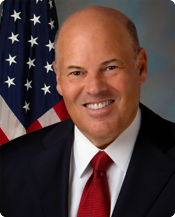On August 19, The Wall Street Journal announced that Postmaster General Louis DeJoy will postpone operational changes at the U.S. Postal Service, such as removal of mail processing equipment and collection boxes, until after the November election.
He was quoted as saying, “To avoid even the appearance of any impact on election mail, I am suspending these initiatives until after the election is concluded. According to the U.S. Election Assistance Commission, in 2016 about 24 percent of votes were cast using mail-in ballots. The figure will likely be much higher this election given the pandemic.”
People protested in Santa Monica last weekend that DeJoy and President Trump were trying to undermine mail-in voting. They pointed to the fact that DeJoy, who earlier made substantial donations to Trump’s campaign, was a Trump appointee.
This editor first noticed there was a problem with postal delivery when a three-day-delivery package was sent from Thermopolis, Wyoming on July 3 and didn’t arrive in Pacific Palisades until August 25, 53 days later.
An inside source told me that the problem was with the distribution centers and the fact that more postal workers than reported had tested positive for Covid-19, and other people stopped showing up for work. This editor has no way to determine if this is true.
President Trump, instead of examining the actual situation with the Postal Service, inflamed the situation by predicting that there will be “massive fraud” with mail-in voting and it will benefit the Democrats. He provided no proven research to support these charges.
With Covid-19 and L.A. County’s current voting system, many more residents have planned to use mail-in voting than in 2016. (Many L.A. County residents may remember the March Primary election earlier this year, when there were enormous problems with the computers at polling stations, the long lines that forced people to wait for hours to vote, and the lack of polling places.)
Is there a systemic problem with the U.S. Postal Service that’s going to affect mail-in voting in November? Can people trust that their mail-in ballots will be counted in time?
According to the Postal Service’s annual financial report, the agency had a net loss of $8.8 billion in 2019, bringing its total liabilities to more than $97 billion.
Frank Todisco, the chief actuary at the U.S. Government Accountability Office, said the Postal Service is more than $160 billion in debt and that over the past decade, the debt and unfunded liabilities like pensions and health care have outpaced the Post Service’s revenue. Unfortunately, the USPS can’t change its business model or receive a special pre-election subsidy without approval by a dysfunctional Congress.

Some have questioned if the U.S. Post Office is able to operate profitably because of regulations enacted by Congress.
Postal Service Net Income/Loss By Year
- 2019 – $8.8 billion loss
- 2018 – $3.9 billion loss
- 2017– $2.7 billion loss
- 2016– $5.6 billion loss
- 2015– $5.1 billion loss
- 2014– $5.5 billion loss
- 2013– $5 billion loss
- 2012 –$15.9 billion loss
- 2011 –$5.1 billion loss
- 2010 –$8.5 billion loss
- 2009 –$3.8 billion loss
- 2008 –$2.8 billion loss
- 2007 –$5.1 billion loss
- 2006 –$900 million surplus
- 2005 –$1.4 billion surplus
- 2004 –$3.1 billion surplus
- 2003 –$3.9 billion surplus
- 2002 –$676 million loss
- 2001 –$1.7 billion loss
DeJoy, a certified public accountant, was CEO of New Breed Logistics from 1983 to 2014 and retired after the company was acquired by Connecticut-based freight transporter XPO Logistics for a reported $615 million. He then served as CEO of XPO’s supply chain business in North America for a year and was appointed to a strategic role on XPO Logistics Board of Directors until 2018.
An August 17 Barron’s story (“The Post Office Is Always Losing Money. It’s Not Its Fault”), argued that DeJoy’s résumé qualified him for the job as postmaster general.
Why is the U.S. Postal Service losing money?
- First-class mail, the agency’s most profitable class of mail, has seen a 44% volume decline since 2006. It has been replaced by text messages and email. Its volume could decrease another 50% over the next few months due to the pandemic, according to the Wall Street Journal.
- The 2006 Postal Accountability and Enhancement Act, signed into law by President George W. Bush, forces the Postal Service to set aside billions of dollars for its employees’ pensions before they are due. It requires the agency to calculate all of its retiree pension and healthcare costs for the next 75 years, including for people it hadn’t even hired yet, and put away enough over the next 10 years to cover them.
On AFP/Fact Check, USPS spokesman David Partenheimer said that this pre-funding requirement is hugely impacting the financial situation. Partenheimer also blamed “an outdated business model that needs to be addressed through legislative and regulatory reform.”
In 2014, the Postal Service was requesting reforms to workers’ compensation, moving from a pension to defined contribution retirement savings plan, and paying senior retiree healthcare costs out of Medicare funds, as is done for private-sector workers.
Additionally, the 2006 law restricted the post office’s ability to set prices. First-class mail, marketing mail, and other products the post office does not have a large competition for were all tied to the consumer price index, meaning it couldn’t increase rates for those products above the rate of inflation. This has caused various problems, as in 2009, when prices couldn’t be raised at all on those products, because there was no inflation.
In 2013, under President Barack Obama, the USPS announced that it could save $2 billion a year by discontinuing Saturday delivery service, except for packages, mail-order medicines, Priority Mail, Express Mail, and mail delivered to P.O. boxes, beginning on August 10 that year. However, the Consolidated and Further Continuing Appropriations Act that was passed a month later reversed the Saturday delivery mail cuts.
Another idea the Postal Service floated, supported by then-Postmaster General Patrick Donahoe, was ending door-to-door delivery of mail for some or most of the 35 million addresses that currently receive it, replacing that with either curbside boxes or nearby “cluster boxes.”
The cost savings would be would save $4.5 billion per year out of the $30 billion delivery budget. One site reported that door-to-door city delivery costs annually an average $353 per stop, curbside $224, and cluster box $160 (and for rural delivery, $278, $176, and $126, respectively).
According to some sources, the Postal Service generates about $71 billion in annual sales, including $23 billion in parcel revenue during 2019. UPS had about $76 billion in sales and $46 billion in U.S. package revenue over that span, while the numbers for FedEx were $69 billion and $48 billion.
In an April 27 story in the Notre Dame News (“Postal Service Losing Money Because of Congressional Mandate Not Low Prices, Expert says”), James O’Rourke, professor of management at the University of Notre Dame’s Mendoza College of Business, said the Postal Service’s money woes result from the stifling congressional mandate.
“The Trump administration is mistaken about its claim that the postal service is losing money ‘every time they hand out a package for Amazon and other internet companies,’” O’Rourke said. “The current agreement with Amazon, and presumably other online merchants, is, at the very least, a break-even arrangement. The reason the postal service is losing money is because of a congressionally mandated retirement healthcare funding program that no other government agency is required to observe. This creates a $6.5 billion annual shortfall that could easily be avoided.”
O’Rourke said the solution would involve three steps:
“First, repeal the pre-funding mandate and use the accumulated reserves to fund future pay-as-you-go costs. That reserve now has about $47 billion on deposit. Second, adopt generally accepted accounting principles to determine postal service liabilities. Nearly every for-profit business in this country does exactly that. And third, provide Medicare for future USPS retirees. This is precisely what military retirees are required to participate in.’”
However, instead of working to restructure the Postal Service, the House of Representatives voted (257-150) to allocate $25 billion and ban operational changes. The Senate is unlikely to vote on the bill.
On August 19, William Galston wrote in a Wall Street Journal piece (“Putting Aside Politics on the Post Office”) that “Additional funds will only transfuse blood into a desperate patient, and incremental measures will merely postpone the inevitable. Like so many of our institutions, the USPS needs structural reform. The options are well understood, and the obstacle is political will.”
On August 22, Circling the News e-mailed three questions to Congressman Ted Lieu, who represents Pacific Palisades:
- The U.S. Postal Service lost $8.8 billion during 2019, more than doubling its losses from the previous year. The results marked the 13th consecutive year the mailing agency lost money. Does the Representative have ideas for changing that?
- The Postal Accountability and Enhancement Act, signed by President George W. Bush, required the Postal Service to calculate all of its retiree pension and healthcare costs for the next 75 years, which is when it started losing excessive amounts of money. Will Congress consider repealing that act?
- Will Congress also address Saturday delivery and the possibility of discontinuing it, in order to save money?
CTN has not heard back from Lieu’s office.
(Editor’s note: All California residents are supposed to receive a vote-by-mail ballot. Here’s a common-sense solution. The surest way to make sure your vote counts is to drop the ballot by a polling place when they open. That way you won’t have to wait in the long polling lines, nor will you be dependent on the mail. It took me 53 days to receive a package from Wyoming that was sent in July.)




This is a very informative and balanced article. Thank you for shedding some light on this issue.